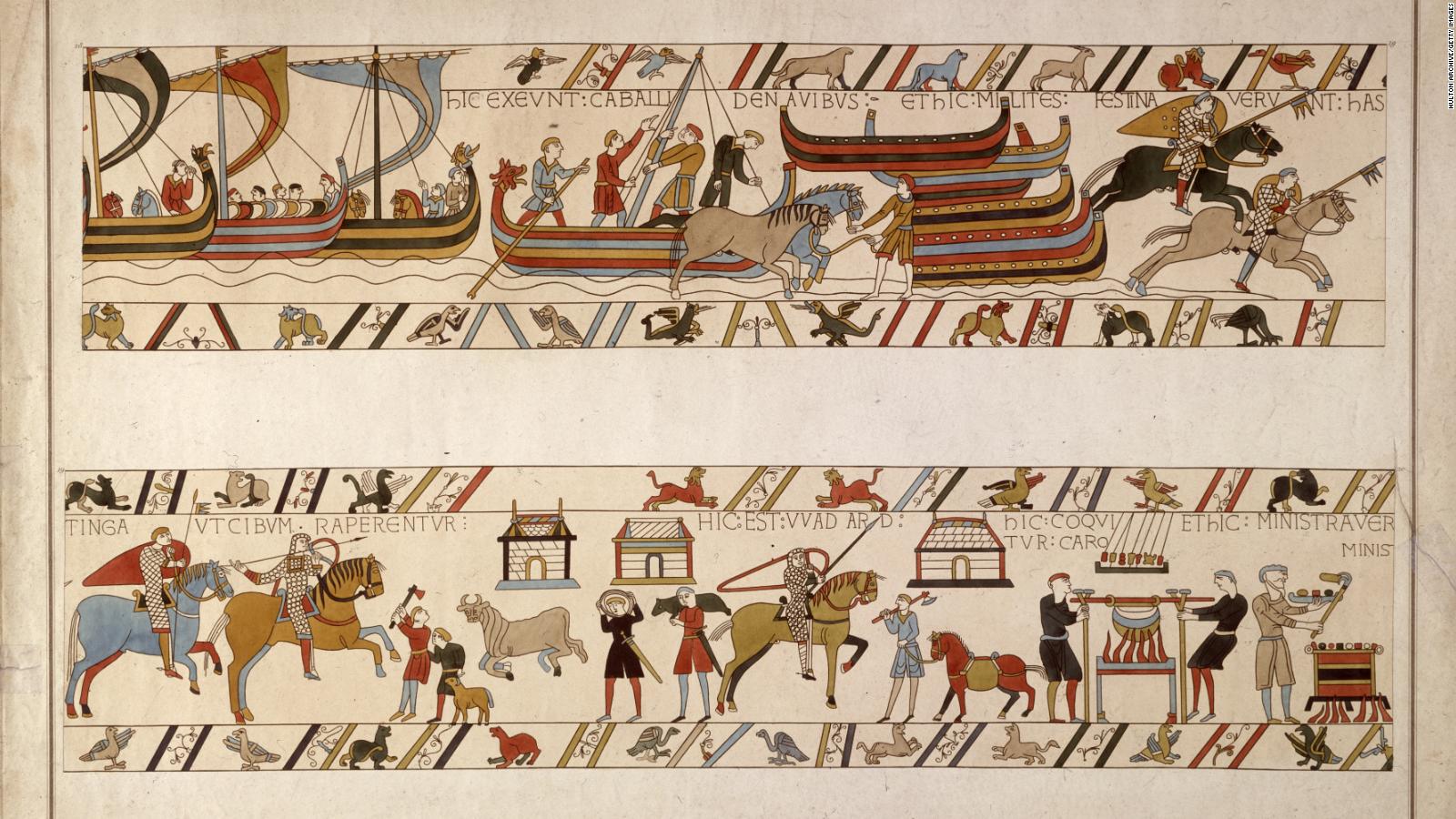The Bayeux tapestry is an embroidered cloth which is nearly 70 metres (230 ft) long. It depicts the events leading up to the Norman conquest of England. It is presumed to date back to the 11th century, within a few years after the Battle of Hastings. It tells the story from the point of view of the conquering Normans but is now agreed to have been made in England. The cloth consists of some seventy scenes, many with Latin embroidered on linen with coloured woollen yarns. It is likely that it was commissioned by Bishop Odo, William the Conquers half-brother, and made in England – not Bayeux – in the 1070s. In 1729 the hanging was rediscovered by scholars at a time when it was being displayed annually in Bayeux Cathedral. The tapestry is now exhibited at the Musée de la Tapisserie de Bayeux in Bayeux, Normandy, France.
The Bayeux tapestry is embroidered in crewel (wool yarn) on a tabby-woven linen ground 68.38 metres long and 0.5 metres wide (224.3 ft × 1.6 ft) and using two methods of stitching: outline or stem stitch for lettering and the outlines of figures, and couching or laid work for filling in figures. Nine linen panels, between fourteen and three metres in length, were sewn together after each was embroidered and the joins were disguised with later embroidery. Later generations have patched the hanging in numerous places and some of the embroidery (especially in the final scene) has been reworked. The tapestry may well have maintained much of its original appearance – it now compares closely with a careful drawing made in 1730.
https://en.wikipedia.org/wiki/Bayeux_Tapestry#Construction,_design_and_technique
ARTIST REFERENCES – YULIA MAKEYEVA
Yulia Makeyeva grew up in Russia and is now based in Jersey, Channel Islands. With a Linguistics degree, an education in Art History, silversmithing and jewellery making background, she turned her full attention to art in 2019. She experiments with different mediums, spanning photography, installations, video, collage, printmaking and traditional domestic crafts. She continually seeks and displays beauty through her work by arranging a contrasting array of materials from the household, industrial to organic matters collected outdoors into abstract forms. She participated in a Textile-based art exhibition in February 2020 in Jersey curated by the RampArts collective. For this exhibition, the curator had chosen works where the artist experimented with drapery, single threads, recycling, and objects covered with fabric.
https://yuliamakeyeva.co.uk/about/


